A European project to understand the emissions performance of sustainable aviation fuel (SAF) when unblended with fossil jet fuel has started with the first clearance test flight of a Rolls-Royce Trent XWB-powered Airbus A350 aircraft. One of the two engines was fuelled with an unblended SAF mixture made from hydroprocessed esters and fatty acids (HEFA) produced in the EU and supplied by Neste. The test flight is the first in a series scheduled this month to analyse the safety of 100% SAF and next month a German Aerospace Center (DLR) Falcon 20E ‘chase aircraft’ equipped with sensors will follow 50 metres behind the A350 test aircraft to measure the emissions directly from the SAF-fuelled engine exhaust. Although SAF has demonstrated its capability to reduce CO2 emissions, little research has been carried out on other aircraft engine emissions and the ‘Emission and Climate Impact of Alternative Fuels’ (ECLIF3) project will measure other climate-relevant emissions and assess the volume and consistency of contrails. The project will also carry out ground testing to measure particulate emissions in local airport environments. Both Airbus and Boeing are keen to see the current maximum 50% SAF blending limit raised.
“SAF is one of the aviation industry’s best low-carbon solutions with an immediate impact on CO2 emissions today,” said Steven Le Moing, Airbus New Energy Programme Manager. “This research project will help us to better understand the impact of unblended SAF on the full scope of aircraft emissions, while supporting SAF’s future certification for blends that exceed today’s maximum of 50%.”
Airbus Flight Test Engineer Emiliano Requena Esteban reported the first test flight of its kind to use a commercial passenger jet went “exceptionally well” and had shown no perceptible difference in engine behaviour between jet fuel and SAF.
Other emissions from aircraft engines to be measured by the study include carbon monoxide, nitrogen dioxide, water vapour, soot and aerosol and sulphate aerosol particles. Additional measurement and analysis for the characterisation of the particulate-matter emissions during the ground testing will be delivered by the UK’s University of Manchester and the National Research Council of Canada.
“Decarbonising aviation is not just about reducing CO2 emissions,” said Le Moing. “At Airbus, our priority is to deal with the complete climate-impact challenge, which includes overall greenhouse gases and other aircraft emissions. Our decarbonisation plan focuses on accelerating technology development to this end, in complement to a dynamic deployment of SAF.”
The flight and ground tests will compare findings from the unblended HEFA fuel against those of standard kerosene and low-sulphur kerosene. Neste has supplied 117 tonnes of neat SAF for the entire test campaign, which was made from EU-sourced used cooking oil. The SAF refining process was carried out at Neste’s Finnish biorefinery in Porvoo, transported by ship to Rotterdam for the final processing step and then brought by truck to Toulouse.
“We’re delighted to contribute to this project to measure the extensive benefits of SAF compared with fossil jet fuel and provide the data to support the use of SAF at higher concentrations than 50%,” said Jonathan Wood, Neste’s VP Europe, Renewable Aviation. “Independently verified analysis has shown 100% Neste MY Sustainable Aviation Fuel delivering up to 80% reduction in GHG emissions when all life-cycle emissions are taken into account. This study will clarify the additional benefits from the use of SAF.”
DLR has previously conducted research on analytics and modelling, as well as performing ground and flight tests using alternative fuels with its Airbus A320 ATRA research aircraft in 2015 and 2018, together with NASA.
“By investigating 100% SAF, we are taking our research on fuel design and aviation climate impact to a new level,” said Dr Patrick Le Clercq, ECLIF Project Manager at DLR. “In previous research campaigns, we were already able to demonstrate the soot reduction potential of between 30 and 50% blends of alternative fuels and we hope this new campaign will show this potential is now even higher.”
Added Simon Burr, Director, Product Development and Technology, Rolls-Royce Civil Aerospace: “In our post-Covid-19 world, people will want to connect again but do so sustainably. For long-distance travel, we know this will involve the use of gas turbines for decades to come. SAF is essential to the decarbonisation of that travel and we actively support the ramp-up of its availability to the aviation industry. This research is essential to support our commitment to understanding and enabling the use of 100% SAF as a low-emissions solution.”
Initial results from the ground and flight tests are expected later in 2021 and more complete results in 2022.
In January, Boeing said raising the SAF blending limit was necessary for the industry to achieve its long-term reduction goals and pledged to ensure its aircraft were able to fly on 100% SAF by 2030 (see article).
Top photo (S. Ramadier): The Airbus A350 test aircraft is refuelled with 100% SAF before its first clearance test flight. Video below shows the refuelling and the aircraft taking off.


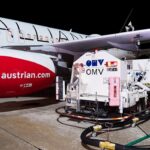
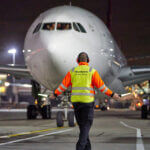
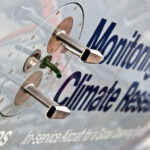


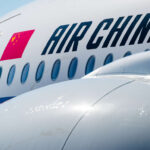
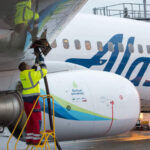
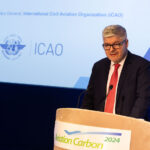
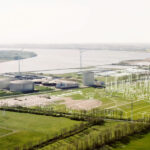
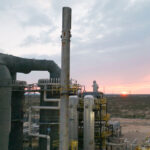
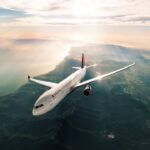
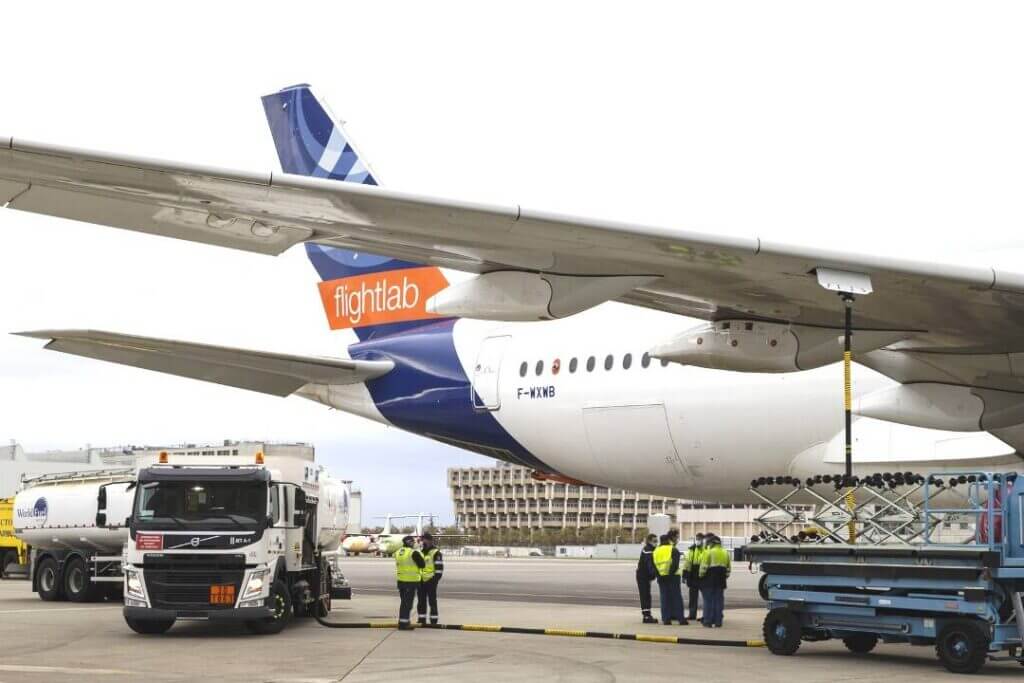

More News & Features
Progress on decarbonising the airline sector has been slow this year, says IATA chief
EASA releases status report on Europe’s SAF production and readiness to meet blending targets
New study highlights differing strategies and barriers to decarbonising aviation in UK and Europe
New partnerships formed to drive e-SAF production in Nordic markets
IAG continues to go big on e-SAF as it inks 10-year offtake agreement with Infinium
US on the pathway to achieving its 2030 SAF Grand Challenge target, says DOE report